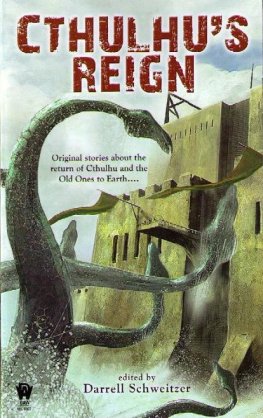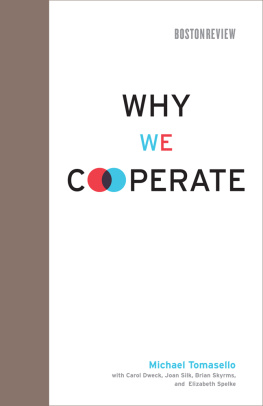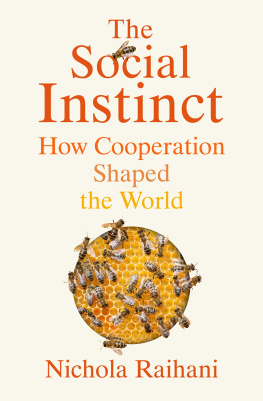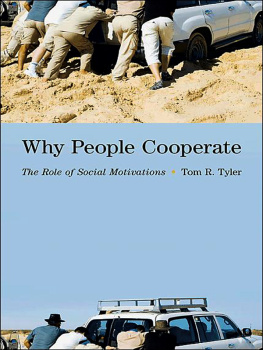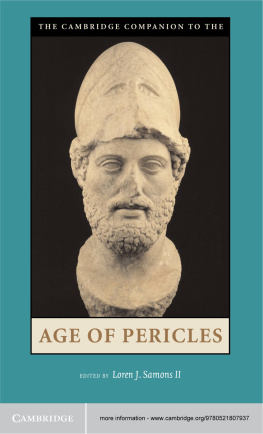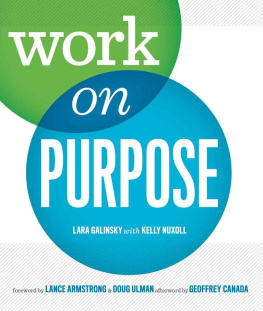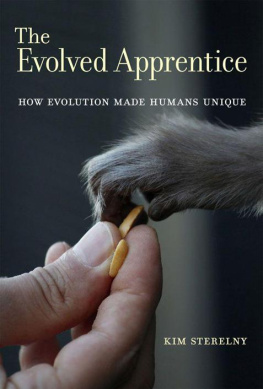All rights reserved.
Published in the United States by Crown Business, an imprint of the Crown Publishing Group, a division of Penguin Random House LLC, New York.
CROWN BUSINESS is a trademark and CROWN and the Rising Sun colophon are registered trademarks of Penguin Random House LLC.
Crown Business books are available at special discounts for bulk purchases for sales promotions or corporate use. Special editions, including personalized covers, excerpts of existing books, or books with corporate logos, can be created in large quantities for special needs. For more information, contact Premium Sales at (212) 572-2232 or e-mail .
Library of Congress Cataloging-in-Publication Data is available upon request.
AG: To my parents, David and Maeda, for teaching me to be a more frequent cooperator, to be a more effective competitor, and to find the right balance between the two.
MS: To my perfect friend Michelle and the memory of my grandfather Arthur for teaching me that no matter what happens, we can always find our balance.
Introduction
A t 8:20 p.m., one week before Christmas, 1996, an explosion ripped a hole in the garden wall of the heavily guarded Japanese embassy in Lima, Peru. With the smoke still rising, 14 armed guerrillas from the Tupac Amaru Revolutionary Movement (MRTA) stormed the ambassadors residence. Within minutes, everyone in the compound became a hostage.
The Japanese ambassador had been throwing a party for over 600 guests that evening; among the dignitaries were Peruvian congressmen, members of the Supreme Court, and chiefs of police.
This was a defining crisis for the Peruvian president, Alberto Fujimori, whose parents had emigrated from Japan. Although Fujimori had made significant gains against the MRTA when he came to power in 1990, by 1996 the Peruvian economy had slowed, prices were rising, and many Peruvians had become distrustful of his administration. On the eve of the embassy takeover, Fujimoris popularity had plummeted to 38 percent. Not only did the crisis put Fujimoris political future at stake, but worse, his own mother and brother were two of those taken hostage.
Initial reports revealed that the guerillas were armed to the teeth with machine guns and antitank weapons, and that they had wired rooms as well as the roof with explosives. They had chosen their target wellthe ambassadors compound was encircled by a 12-foot wall, the windows had both bulletproof glass and bars, and the doors within the building had been designed to withstand grenades.
The guerrillas, who appeared to hold all the cards, began making demands: They wanted the Peruvian government to release 450 fellow MRTA members, enact market reforms, and improve living conditions in Perus jails.
Negotiation appeared to offer the only solution. Not only did the prospects of a military resolution appear dim, but Fujimori faced both internal and substantial external pressure to reach a negotiated settlement. Japanese leaders, including Prime Minister Ryutaro Hashimoto, publicly called on Fujimori to negotiate with the hostage-takers to ensure the safe release of hostages.
Fujimori had a dilemma. He could cooperate with the hostage-takers and negotiate a solution. Or he could compete with them and launch an attack on the compound. Though there were serious drawbacks with both options, the debate focused on the dichotomy between these two approaches: compete or cooperateact as a friend or behave like a foe.
The tension between competition and cooperation defines many of our interactions at home and at work, and to succeed across these realms requires knowing when and how to do both. In our most important relationships, from the negotiating table in the boardroom to the breakfast table with our kids, we routinely face challenges that appear to offer two opposing solutions. Yet the questionshould we cooperate or should we competeis often the wrong one. Our most important relationships are neither cooperative nor competitive. Instead, they are both.
Rather than choosing a single course of action, we need to understand that cooperation and competition often occur simultaneously and we must nimbly shift between the two, and that how we navigate the tension between these seemingly opposite behaviors gives us profound insight into human nature. In this book, we explore this tension and we offer advice to help you know when to compete, when to cooperateand how to do both better to get more of what we want, at work and at home.
To understand this dilemma lets return to Fujimori. Instead of choosing whether to act as a friend or a foe, Fujimori did both.
Throughout the crisis, Fujimori publicly committed himself to a cooperative solution. In search of a negotiated agreement, he flew to Canada to meet with the Japanese prime minister, he flew to Cuba to meet with Fidel Castro, and he flew to London stating that his goal was to find a country that would give asylum to the MRTA group. Even four months into the crisis, Fujimori proclaimed, We are not contemplating the use of force [except] in an unmanageable emergency, which we dont expect to happen.
Fujimori not only made public statements about his cooperative intentions, but he also actively engaged in negotiations. He assembled a credible negotiation team that included the Canadian ambassador, an archbishop, and a Red Cross official. And the negotiations spanned a wide range of substantive issues including the release of prisoners and offers of asylum in Cuba and the Dominican Republic. They were also very successful: Through the course of negotiations, the guerrillas released hundreds of hostages and even allowed reporters into the compound.
This cooperative approach, however, reflects only the very public side of Fujimoris plan. As it turns out, Fujimori had also developed a second, secret plan soon after the crisis began. He had gathered the heads of the armed forces and the intelligence branches to formulate a military option. Over the four months of the crisis, the military smuggled equipment hidden in books and games to hostages, including miniature radios, microphones, and video cameras. The military also learned that although the guerrillas maintained tight security throughout most of the day and night, they routinely played an indoor soccer game in the early afternoona piece of intelligence that would prove critical to the competitive solution they later implemented.
Very early on in the crisis, the government played loud music throughout the day and performed deafening tank exercises near the compound. Although the noise might seem like an attempt to assault the senses of the hostage-takers or scare them with displays of might, in reality its purpose was to provide sound cover for a covert operation: to dig 170 meters of tunnels under the compound. At the same time, on a remote naval base, Fujimori built a replica of the ambassadors residence, and was training special units to practice storming the compound.
After more than four months, the negotiators had made real progress, so much so that the Canadian ambassador asserted that both sides were close to settlement. At the same time, military preparations were also complete. And that was when Fujimori took action.
On April 23, 1997, during the hostage-takers daily game of soccer, the Peruvian military detonated three charges, killing three of the hostage-takers. Commandos streamed into the compound through the holes created by the explosions, through the front door, and up ladders to the back of the building. When it was over, all 14 guerrillas, one hostage, and two soldiers had died.


